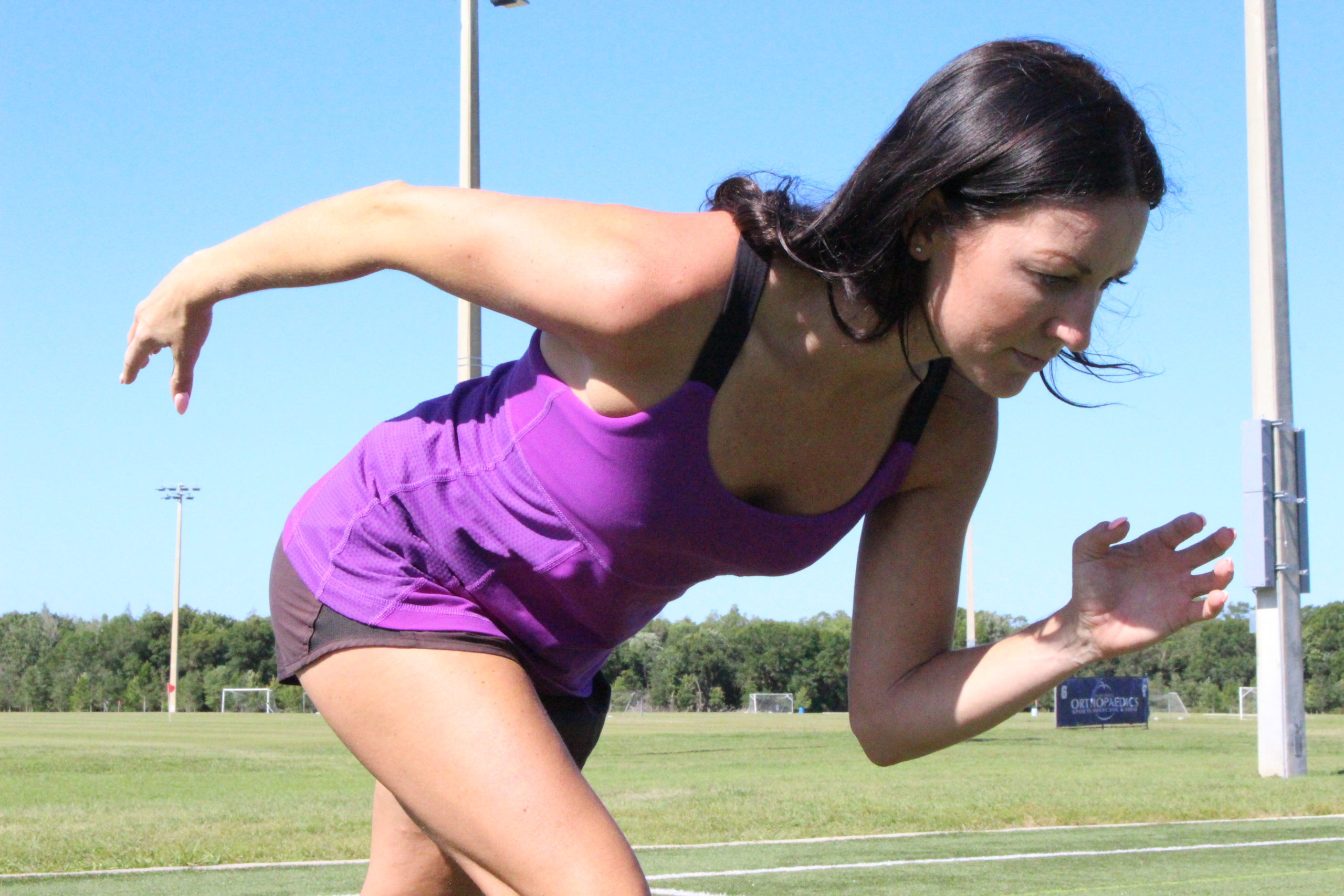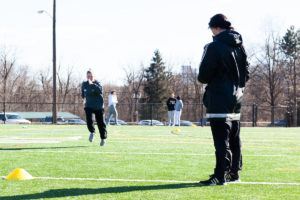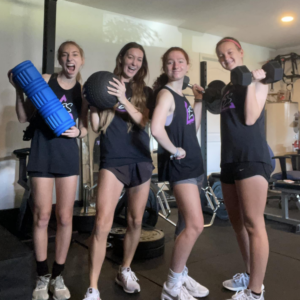
15 Dec Stop Training Speed with the Just Soccer Ball: You Must Do Both
Stop training speed with the just soccer ball.
I love posting statements like this on social media because enraged people come out of the woodwork, without looking into its context and the actual programming of the coach.
Just look, this caused a cacophony of responses:
“You’re not taking into account the demands of the game.”
“This statement is problematic because soccer is about decision-making.”
“To be fast in soccer, it’s more than linear running from point A to B.”
Thank you, Captain Obvious. ;-O
I mean…
They’re right.
There is a time and place for sport specific work and to train reactivity, varying and moving starts, and decision making in tight and large spaces. We’d be doing a disservice to our players if we just trained like track athletes all the times.
But, we’d also be doing a disservice to our players if we just trained with the ball, especially for speed improvements.
There needs to be certain buckets filled, with progressions and specificity in any performance program.
And drum roll please…the emptiest bucket in a youth soccer player’s week is speed.
The emptiest bucket in a youth soccer player's week is speed. Click To TweetThe majority of practices and games are filled the light to moderate running buckets, from passing drills, shooting drills, ball control drills, and small sided games. Very rarely, do youth players get exposed to top speed and reach the highest possible MPH they can reach.
Pure speed needs to be introduced into the program so kids are exposing their central nervous system to a higher stimulus, otherwise they will stagnate and not raise their speed ceiling.
Remember this: just because true speed development is being added into a player’s program, doesn’t mean we throw out ball work and specificity. That would be downright ignorant.
Soccer players can (and must) work on both speed off the ball, and on the ball.
Soccer players can (and must) work on both speed off the ball, and on the ball. Click To TweetThe Youth Soccer World Has Gotten Speed Wrong
Anytime I have a new high school female soccer player come to me for her initial assessment, I’m floored looking at her MPH.
It’s slow.
Girls usually come to me at under 15 MPH. Adding to the disaster, the majority of these girls want to compete at the D1 college level, and below 15 MPH isn’t going to cut it.
The best soccer players are fast and explosive, on and off the ball. The have pure speed (over 18MPH at college level, and some professionals reaching over 19-20 MPH), and they’re technical, they’re quick decision makers. Essentially, they have it all.
After watching the UNC vs. UCLA NCAA DI National Championship, it just reaffirmed how fast players must be and the importance of speed for game changing actions. The game was electric, with a rapid back-and-forth momentum between both teams. It was technical, tactical, and physical – the complete package.
Side note: if you’re a female soccer player who aspires to play at this level and you didn’t watch the game, that’s not good. You need to know if you’re a fit and watch as many college games as possible.
I implore you to watch and observe every aspect of each player’s game:
Youth Need an Extreme Stimulus
“If you want to become fast, you need to train extreme to move the needle.”
Track coach Tony Holler couldn’t have said it any better. For a man who has had four decades in building the fastest athletes, track and various team sports alike, we should lean in and listen.
The Central Nervous System (CNS) must be trained to fire fast, and the only way for players to accomplish this is without the ball, when sprint mechanics are pristine and they’re reaching top MPH.
If the ball were in the picture, knee drive wouldn’t be high enough, ground contact wouldn’t be fast on the ball of the foot, and posture wouldn’t be upright like the world’s fastest athletes. If the adaptation you want from a drill is top speed and motor neurons to fire at their fastest, get rid of the ball.
“But can you throw the ball and have players chase?” I mean, you could have a drill like this, but if it’s to reach top MPH, they still wouldn’t reach it (try it for yourself). This isn’t to say you can’t incorporate this drill every now and then to add specificity of the technical side, but remember the adaptation you wish to achieve from your players.
If the adaptation you want from a drill is top speed and motor neurons to fire at their fastest, get rid of the ball. Click To TweetYou’d be hard pressed to find a player who can run as fast as possible as they do with the ball as they do without. In fact, MPH with the ball is usually in the single digits, and with top speed, we want well over double digits, so why would we only train with the ball? Why wouldn’t we expose the CNS to higher speeds so the player truly improves from an intense stimulus that they rarely get during the training and playing week?
The best drill for getting pure speed is the 10m Fly, and doing a few sprints a week (be sure to time with an accurate Speed Timing System):
As Coach Mike Whiteman says, we need to build “apex predators” – soccer players who bolt past opponents and who are electric and robust.
Mind you, top speed sprint training has an injury resiliency component of recruiting the hamstring muscles – the muscles that stabilize the knee and safeguard from ACL injuries. The best “vaccine” for bulletproofing the hamstrings is sprint training.

If Only…
If only our youth soccer players didn’t specialize young. If only they explored new environments. If only they developed their brains. If only they expressed creativity.
Now, everyone’s trying to pick up the pieces with fancy drills and “speed and agility drills” with the ball to improve the cognitive component of the game.
If only we trained the brain component young, in the years when a child was their most plastic, with free play and a variety of movement.
If only our kids explored unpredictable environments in childhood, they’d be fast movers and fast thinkers today.
If only our kids explored unpredictable environments in childhood, they'd be fast movers and fast thinkers today. Click To TweetAlas, I digress.
Here are some specific and progressed drills that are nice to complement true speed training with:
Varied Accelerations
Reactive Sprinting
Curved Sprinting
Agility and Small-Sided Games
These are all complementary to your true speed work, never to replace it. Remember that, please.
To conclude, we must work on all aspects of performance to serve our youth athletes. We must ensure they’re filling the speed bucket and improving their MPH over time. We must also sprinkle in variety and fun games to inspire creativity, fun, and fast decision making.
Speed kills.
Be sure to train it relentlessly. <— and time yourself with an accurate Speed Timing System
Check out this podcast THE REAL WAY TO TRAIN SPEED IN SOCCER PLAYERS with legendary track coach of over four decades, Tony Holler:
TRAIN WITH ME IN TAMPA, FLORIDA ON SPEED, STRENGTH AND AGILITY BOOK AN ASSESSMENT HERE

GET THE STRONG FEMALE ATHLETE BOOK HERE



Athletic Lift
Posted at 14:57h, 07 FebruaryAfter reading your blog, I admit I have to agree with what you have indicated there. I must really stop training my speed with just the soccer ball, instead I must do both! Thanks for writing this!
erica
Posted at 21:41h, 07 FebruaryAppreciate you reading!!!
Esteban Martinez
Posted at 17:26h, 09 FebruaryThank you for your presentation in Philly. Love your content. We are incorporating these ideas and changing our sessions. Appreciate.
erica
Posted at 17:27h, 09 FebruaryThanks for coming!!!